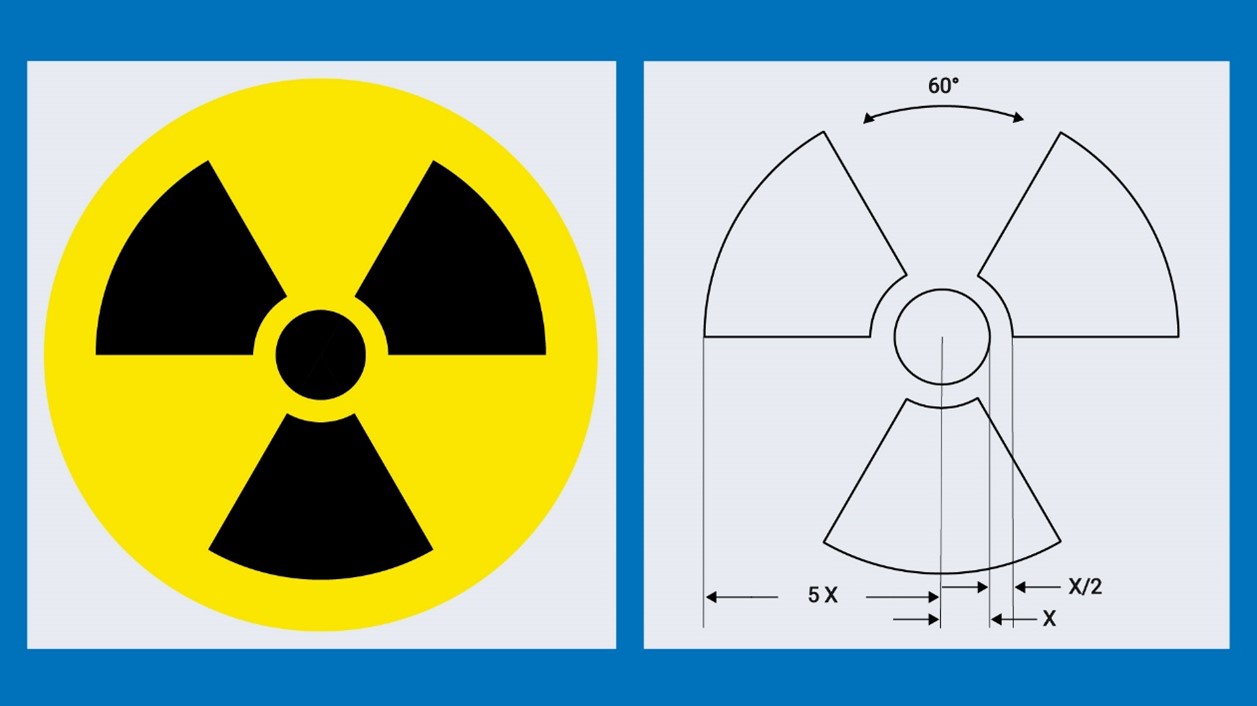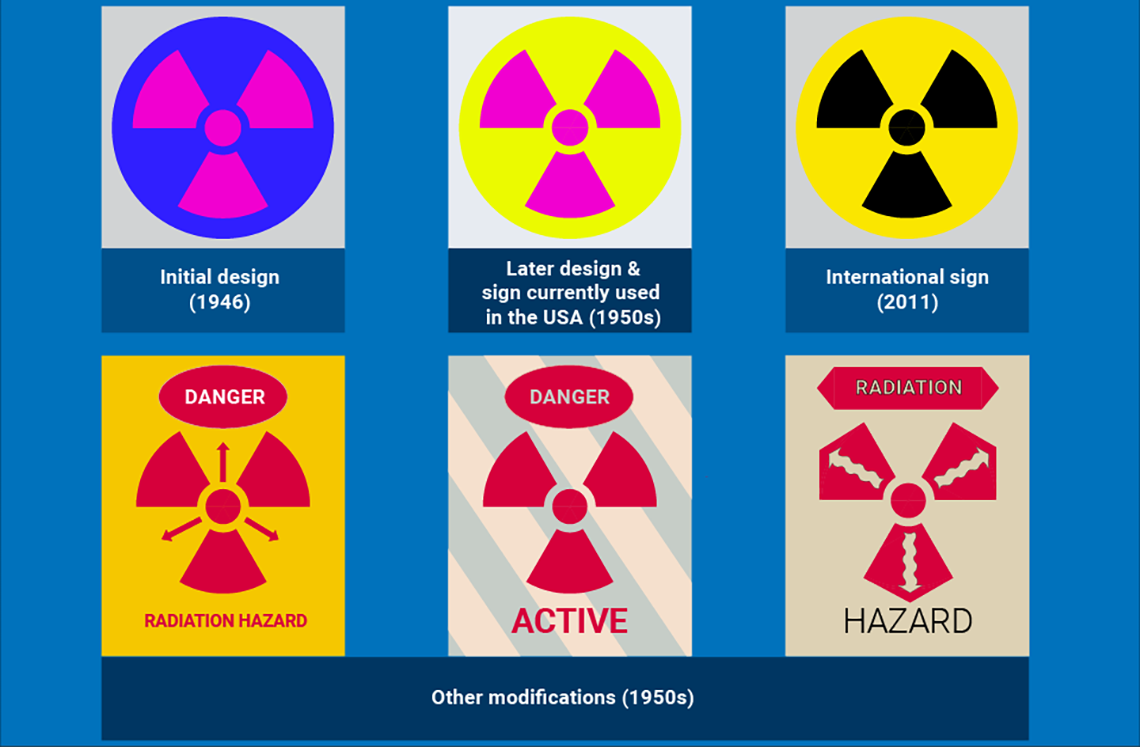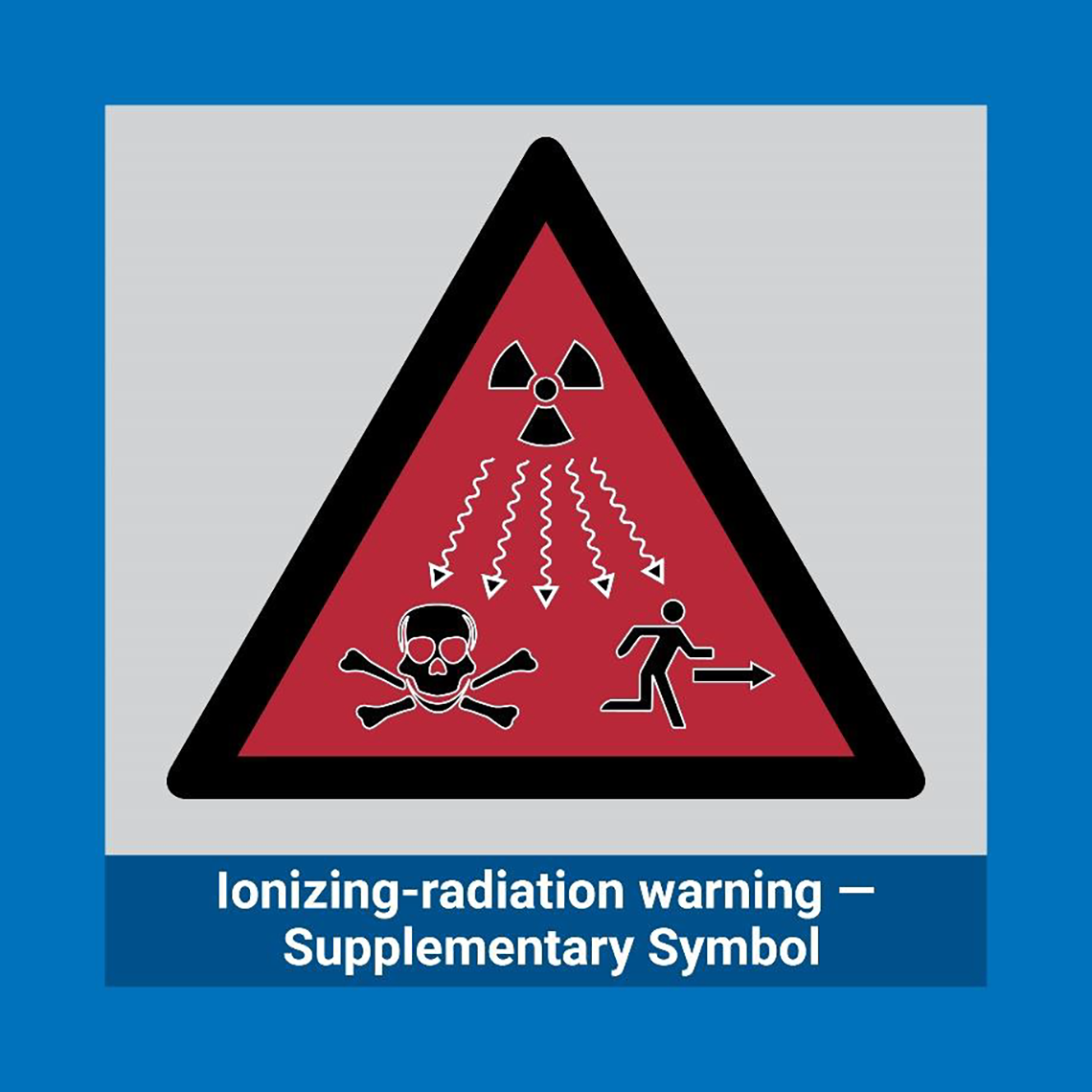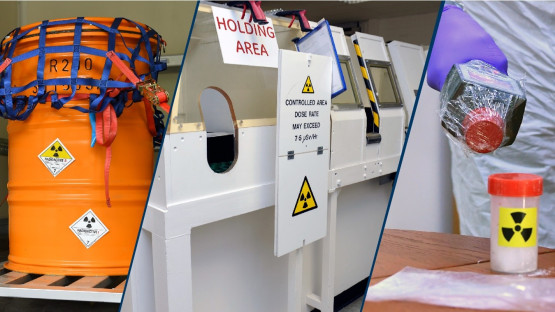The ionizing radiation symbol, featuring three curved blades emanating from a central point, has been used since 1946 to warn workers, scientists and the public of the presence of radioactive material. Since then, the distinctive trefoil has become an internationally recognized symbol.
How Are Universal Ionizing Radiation Symbols Used Around the World?
The ionizing radiation symbol indicates the presence of ionizing radiation and radioactive sources. (Photo: IAEA)
The symbol can be found wherever ionizing radiation or radioactive sources are present, including in objects, equipment, premises or vehicles. It aims to warn of the risk of exposure. It is highly useful to those working with medical devices like computed tomography scanners used for cancer and other diseases diagnosis, or in brachytherapy used for cancer treatment. It also signals the use of radioisotopes, which emit ionizing radiation, in industrial and agricultural applications and for research purposes.

The standardized international ionizing radiation symbol has the three blade segments equidistant from a central circle, with the shapes in black on a yellow background. (Infographic: M.Platonova/ IAEA).
The circle in the middle of the trefoil represents an atom and the blades represent the three common types of ionizing radiation emanating from it — alpha (α), beta (β) and gamma (γ).
The symbol was first designed in 1946 at the University of California Radiation Laboratory in Berkeley. The initial colour palette was magenta on blue, but this was changed after experts observed that people did not associate blue with danger. Scientists found that yellow was the most eye-catching colour.
In the early 1950s, different modifications of the design were developed, for example, with the addition of straight or wavy arrows between or within the propeller blades. By the late 1950s, the American National Standards Institute (ANSI) had codified the official version — magenta on yellow, which is still used in the United States of America today. In other countries, the black on yellow symbol is the most common colour combination.
In 2011, the trefoil was registered by the International Organization for Standardization (ISO) to be recognized internationally as a ‘Warning; Radioactive material or ionizing radiation’ symbol.

The ionizing radiation symbol was first created in 1946 in the USA and has been adapted over time. (Infographic: M.Platonova/IAEA).
Increasing universal understanding — the additional symbol
The trefoil was initially created to mark radioactive material used in controlled environments, such as laboratories, where people who had access to the material would already know its meaning. Over the years, the use of radioactive material in medicine, agriculture and industry has become more widespread.
Consequently, radioactive material or radiation emitting devices can be found not just in research laboratories and nuclear power plants, but also in hospitals, as well as in industrial equipment, for example in X ray security equipment used in airports.
In the past, due to lack of knowledge people would endanger themselves and others because they did not understand the meaning of the symbol. For example, in a few instances around the world, scrap metal collectors and construction workers were exposed to radiation by taking and handling misplaced radioactive sources they had found in scrap yards or on construction sites, because they did not understand the ‘warning signage’.
To improve nuclear safety and security, in 2007 the IAEA and the International Organization for Standardization (ISO) introduced a supplementary symbol designed to be universally understood as ‘Danger — Run Away — Do Not Touch!’.
To determine which symbol would better convey the radiation risk to the public, the IAEA conducted a survey covering 11 countries in different parts of the world. The result was the ‘Ionizing-radiation warning — Supplementary Symbol’, a red triangle that depicts radiation waves, a skull and a running human figure. It was launched as a supplement to the more commonly used ionizing radiation symbol with the intention of further reducing the possibility of accidental exposure to ionizing radiation.

The supplementary symbol is used for high-activity radioactive sources, such as those identified in the IAEA categories 1, 2 and 3 and to which exposure could cause death or serious personal injury.
The IAEA also recommended that the symbol should not be placed on the external surfaces of shipping packages, freight containers, conveyances or building entrances, but rather used for radioactive sources, radiation shields or placed under the cover of devices. This means the symbol is not actually visible during normal use, but it can be seen before attempting to dismantle a sealed radioactive source, as a final warning to prevent exposure to ionizing radiation. It aims to work as a secondary warning alert in case the exterior commonly used trefoil symbol fails to.Interested in a short history of detecting and measuring ionizing radiation? Click here .
What is the role of the IAEA?
- The IAEA develops safety standards and nuclear security guidance to outline the fundamental principles, requirements and recommendations for ensuring nuclear safety and security worldwide, including the rules and requirements of the radiation symbol usage, for example in medical uses of ionizing radiation or in the use of nuclear gauges.
- The IAEA creates public outreach materials to explain what radiation is and how workers, the public, patients and the environment can be protected from ionizing radiation.
- The IAEA, in preparation of safety standards, collaborates with other United Nations bodies, such as the United Nations Scientific Committee on the Effects of Atomic Radiation (UNSCEAR), which undertakes scientific evaluations of sources of ionizing radiation and of the associated exposures, effects and risks to human health and to the environment.






